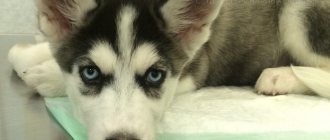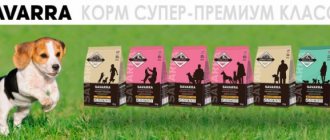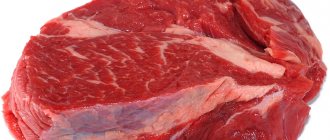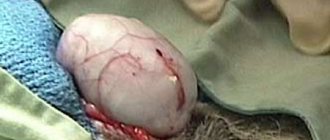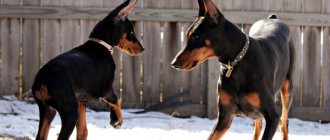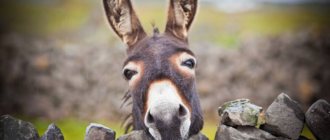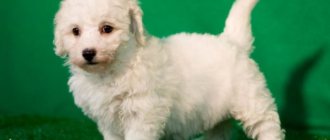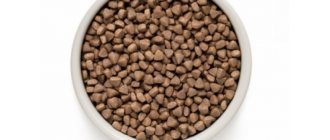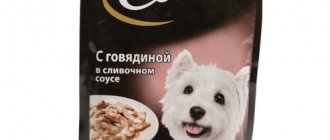What is this phenomenon
In simple terms, crossbreeding is the mating of two representatives of different breeds. This approach to breeding is used when there is a need to improve breed characteristics or breeders want to get a new one. The result of selection work is offspring that have greater strength, endurance, and also have a better ability to reproduce. The following characteristics are improved: vitality, endurance, working qualities, adaptation.
The increased endurance and vitality of some representatives and the poor similar performance of others can be explained by their biological nature. As a rule, long-term purebred breeding leads to a deterioration in breed characteristics over time. The best representatives of the offspring obtained as a result of this method are selected for breeding purebred individuals of the new breed. As a result of crossbreeding, the puppy receives mixed gene pairs: one from the father and one from the mother in each pair.
Today, there are several ways of crossing dogs of different breeds, but a successful result depends on a number of factors: proper care and maintenance that contribute to the development of certain desired qualities, the correct choice of the dominant (possessing more advanced qualities) base and the selection of optimal parents.
Forms of crossing
An important factor influencing the successful outcome of a case is the form of inbreeding used.
Important! The pedigree of potential line starters should be looked at least 3-4 generations deep. For fighting dogs, it is even longer - find out everything about the ancestors up to the 6th generation (if they had an abnormal desire for aggression, such a dog should be culled immediately).
The dynamics of obtaining pure offspring largely depend on her choice. In practice, four different methods are used.
Close
For mating, dogs that are directly related are taken (that is, inbreeding is used). These links usually look like:
- father-daughter;
- mother-son;
- brother-sister.
In pedigree tables, such matings are designated as I–II or, respectively, II–II (these numbers indicate the serial number of the ancestral tribe, and increase as the clan expands).
Many people think that in this way they can quickly and without much effort get puppies with a “show” future. But experienced breeders do not particularly share their optimism - the pros know that such a close relationship carries a high risk of the manifestation of recessive traits inherited from previous generations.
Familiarize yourself with the types of spaniels, huskies, terriers, and mastiffs.
Closely related
Here a slightly different degree of relationship between animals is used, like:
- cousins (I–III);
- uncle and niece (II–III);
- grandfather and granddaughter (III–II).
Did you know? Biologists have found that an adult dog is not inferior in level of intellectual development to a two-year-old child.
Here the danger of “non-standard” manifestations is not as great as with close mating, but some risk still remains - it takes more than one generation to form the desired genotype.
Moderate
The name speaks for itself - the relatedness indicator increases slightly, as can be seen from the numbers in the table.
The standard combinations for this scheme are designated as follows:
- I–IV or I–V.
- II–III or II–V (for successful mating it is necessary that the second generation males deal with bitches of a younger age, representing an odd generational generation. Therefore, option II–IV is excluded).
- Puppies that are “grandchildren” of dogs taken as progenitors of the line are designated by the number III. Such males can be used for mating types III–II, III–III and III–IV.
- For the more distant knee with the code IV, matings of the type IV–I, IV–II or IV–III are allowed, for which knots of only junior lines are involved.
This selection of closely related dogs takes more time, but with the right approach it ensures that the final line is good in quality. Therefore, this approach is used most often.
Remote
Most often, breeders use schemes III–V and its reverse V–III.
Other options are also possible:
- connection of fifth generation bitches with the progenitor male or second generation dogs (I–V, II–V);
- IV–V and vice versa;
- V–I.
Some perform some sort of line purity control using symmetrical IV-IV or V-V. But such experiments cannot be made permanent - they affect the health of the offspring.
Important! If a couple is not particularly willing to make contact, do not rush to rush things - this will only introduce nervousness into the behavior of the animals.
Having found out what the inbreeding of dogs is called and carried out, let us pay attention to the difficulties associated with this process.
Main types
The choice of the type of crossing is influenced by the goals and objectives that the breeder sets for himself. The quality and correct choice of sources are important. The following types of crossing are distinguished: absorption, introductory, reproductive (factory), industrial and variable.
Introductory
It is used when the breed meets all the requirements and has all the necessary qualities, but there is a need to improve them. To obtain the desired result, dogs are crossed in several stages:
- The breeding stock of the improved variety is crossed with a representative of the breed selected to improve the original. The compatibility and compatibility of parents is important.
- The second generation crossbreed is mated with a purebred representative of the breed being improved. In this case, only representatives with clearly expressed desirable characteristics are selected.
- Breeding crosses among themselves.
Factory
This species is also called reproductive. In the process of this method, representatives of several breeds are used for breeding. A new breed is created by crossing crosses that meet all the stated selection goals. As a result of this breeding method, the required qualities and characteristics are developed.
Local aboriginal representatives who are well adapted to environmental conditions are chosen as the mother base. Other breeds are selected based on the qualities that need to be obtained, but which are not in the source being improved. Large breed differences give more chances for the appearance of completely new qualities, but it is not easy to consolidate them. In more similar mixtures, such qualities are established more easily and quickly.
As a rule, factory crossing consists of several components:
- A model of the offspring that breeders want to obtain in the end is being developed.
- Initial representatives are selected.
- Crossing crosses with each other. Genetic enrichment. There may be a “flush” of blood from another breed.
- Severe culling of offspring.
Industrial
The main goal of this type of reproduction is to obtain offspring suitable for a specific purpose. For this purpose, only the first generation of offspring is used. This choice is justified by heterosis, which consists in the fact that the first generation of crossbreeds has improved, more developed parental qualities.
For this method, only purebred representatives are selected. Requirements for crossed individuals: high degree of productivity and compatibility. Uteruses must be adapted to local conditions. Manufacturers are subject to higher quality requirements.
Variable
A type of industrial crossing, in which purebred mothers of the source and offspring mixtures are mated with sires of different breeds, the number of which is not limited. In this case, the heterosis effect is continuously maintained, which allows the crossbreeds to be used more productively.
Hybridization in sled dog breeding
The mating of animals of different species is called hybridization. Its importance is associated with the need to study the origin of dogs and maximize the potential of their wild relatives. This form is often used to breed sledding breeds. Wild dogs and cultivated representatives, when crossed, produce hybrid dogs that are distinguished by strong immunity, resistance to various diseases and adapted to living in harsh conditions.
Farmina: food for dogs of small and large breeds
The hybridization method is used both to breed new breeds and to obtain animals for special use. This method has a negative consequence - a hybrid dog is most often either partially or completely sterile.
Note! Hybridization between species was often carried out among animals. Thus, it was possible to obtain a triple mixture of wolf-jackal-dog, and the cross with a wolf and a jackal was not infertile.
Use of hybridization in nurseries
Who is called mestizo?
You can often hear the expression “mixed breed of dog.” This is not entirely true, since a mestizo is a mixed breed or half-breed resulting from the crossing of representatives of different breeds. Crossed individuals can balance and complement each other's qualities, but the result can sometimes be unpredictable.
One thing is true: mestizos usually have excellent physical health, a high degree of productivity and a stable psyche. They are easy to train, but their inherited personality traits may surprise the owner. But the fact that these are not purebred individuals does not mean that they do not need proper care and maintenance.
Of course, everything depends on the source breeds. Sometimes mestizos are born from mixed pairs of parents (pedigree and mongrel). The great advantage of such dogs is that they do not inherit genetic diseases of their parents.
What to do as an owner
The owner's role in mating is quite large. He not only observes the development of the action from the outside, protecting the couple from external interference, but must also help in case of problems that arise.
The owner's algorithm for mating is simple:
- When meeting for the first time on a walk, it is advisable to keep the bitch on a leash, especially if she is inexperienced, and if she shows aggression, put on a muzzle. At this stage, the owner must calm the dog down, protect it from interference from unnecessary people and animals, and encourage it to establish a relationship with a partner.
- As soon as the couple moves into the groom's territory, the owner must calm the female and monitor her behavior. If the copulation process is going properly, then people do not interfere, taking a wait-and-see attitude.
- If technical problems arise, it is acceptable to help the dogs. A bitch that is too fidgety should be held in place by force, and a male who is not quite accurate should be helped to hit the target. All manipulations are best done in complete silence or while saying soothing phrases.
- Once the act is completed and the dogs are locked together, there is no need to approach them. Nature itself will suggest the animals' course of action; humans will only interfere. If something goes wrong, the dog owner helps the pet move its paw so that the animals are tail to tail. However, you should not try to unhook them. After some time (up to an hour), the physiological state of the penis and vaginal walls will return to normal, and the dogs will come apart on their own.
- After release, the bitch is immediately taken away, since the recovery time after love games is different for representatives of the 2 sexes. The dog will quickly replenish his strength and try to have sexual intercourse a second time, while the lady has not yet left. The female reacts aggressively to such persistence and tries to bite her partner.
If gluing does not occur, then do not be upset in advance. This is a common occurrence in young and inexperienced females and males. Pregnancy will occur, but for greater confidence it is better to repeat the mating procedure after 1-2 days, for 100% results. At the same time, it is not recommended to change your partner.
Video "Dog Mating"
In this video you will learn about the nuances of dog mating.
Recommended Posts
The best hunting helpers: TOP-30 hound dog breeds with names and photos
Review of 8 super premium dog foods
Review and description of 5 premium dog foods
What nickname to choose for a large breed boy's dog
Instructions for Parasitel suspension and tablets for dogs
Description and varieties of Laika dogs
Heterosis
There is such a thing as extreme inbreeding. This happens when:
- the animal is capable of self-fertilization;
- the plant is self-pollinating.
In these cases, it is much easier to accumulate homozygous alleles with the desired trait over generations, since the set of chromosomes from different individuals is excluded. This property is actively used in plant growing. Individuals from the first generation, when self-pollinating, often produce results in which the yield increases by 60%! This is called heterosis and is the most commonly used method for obtaining plant products such as:
- cotton;
- pepper;
- peas;
- beans;
- citrus;
- wheat;
- barley and others.
Under conditions of inbreeding carried out by humans, it is possible to extinguish the manifestation of harmful genes by transferring them to a heterozygous state in future generations. This is done through artificial selection. If the plant lives in natural conditions, then such selection is carried out by nature itself, it is natural. That is why in nature, among self-pollinating plants, it is practically impossible to find deformities, distortions and serious genetic diseases.
History of the development of the concept
If you plunge into history, then such a concept as incest has existed since ancient times, since the time of the pharaohs. This phenomenon was perceived differently in different civilizations. For example, among the ancient Romans incest was considered a terrible sin. But in places like Egypt, European countries, pre-Columbian America, and among all adherents of paganism, this process was a completely normal component of life. Brothers freely married sisters, and this was welcomed as it allowed the "noble" blood of the dynasty to be preserved in the case of royal and royal families. However, the Bible prohibited such incest, incest began to be considered the worst sin, so the entire Christian world stopped such processes over time.
If we talk about plants and animals, then people learned about what inbreeding is, what heterosis is, only over time through experience. It is clear that knowledge of population genetics was not available then. People were guided only by clarity and experimental tests. However, this was enough for it to be noticed: in order to obtain the necessary characteristics and fix them in the offspring, closely related forms with the existing gene, manifested externally, should be crossed with each other.
The same applied to plants. It is known that back in the 14th century, beautiful tulips of non-standard colors were grown in the Ottoman Empire, obtained through incubation. Among animals, dogs were especially often subject to inbreeding, since they were the main attribute of hunting, and hunting, in turn, was practically the main entertainment.
Inbreeding in dogs made it possible to obtain the strongest, hardiest and most efficient hunting dogs. True, a large number of individuals arising from mutations were destroyed.
Degree and coefficient of inbreeding
Theoretical justifications for the concept under consideration were given by many scientists, but the most valuable are the works of the Englishman Wright and the Russian Kislovsky. Through joint efforts, but independently of each other, they were able to create a formula that allows them to calculate the coefficient of inbreeding over generations. It looks like this:
Fx = Ʃ F(1/2)n+ni-1 *(1 + Fa) *100, where
- Fx is the inbreeding coefficient, expressed as a percentage;
- Fa - coefficient of inbreeding from a common ancestor;
- n, ni - pedigree lines.
If you know several generations of a species, and also have information about inbreeding coefficients already calculated for ancestors, then you can calculate the indicator for any organism. It should only be pointed out that such calculations are made only for theoretical purposes. Practice shows that this method is ineffective, since it does not take into account recessive alleles that carry harmful mutations. And they can become both homo- and heterozygotes if the process is carried out frequently.
Therefore, the results of practice differ from those calculated theoretically. The Wright-Kislovsky formula is used only when writing theses, term papers, dissertations, where a very large amount of data over many generations requires systematization and similar calculations.
If we talk about the degree of inbreeding, we have already indicated it above. In dog breeding practice, it is customary to denote it with Roman numerals, which show in which generation there was a common ancestor with the desired trait.
